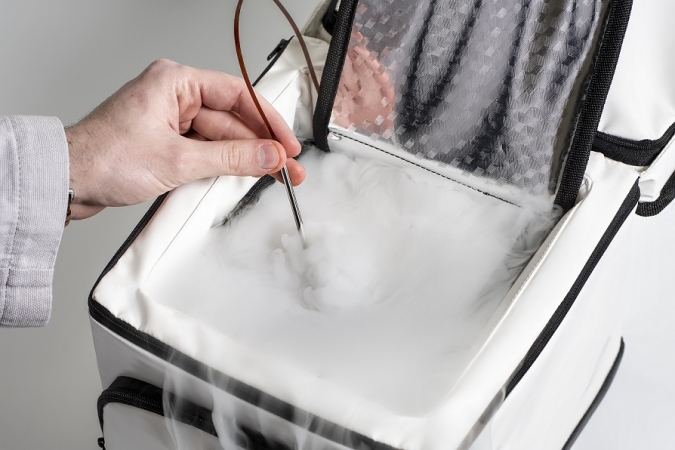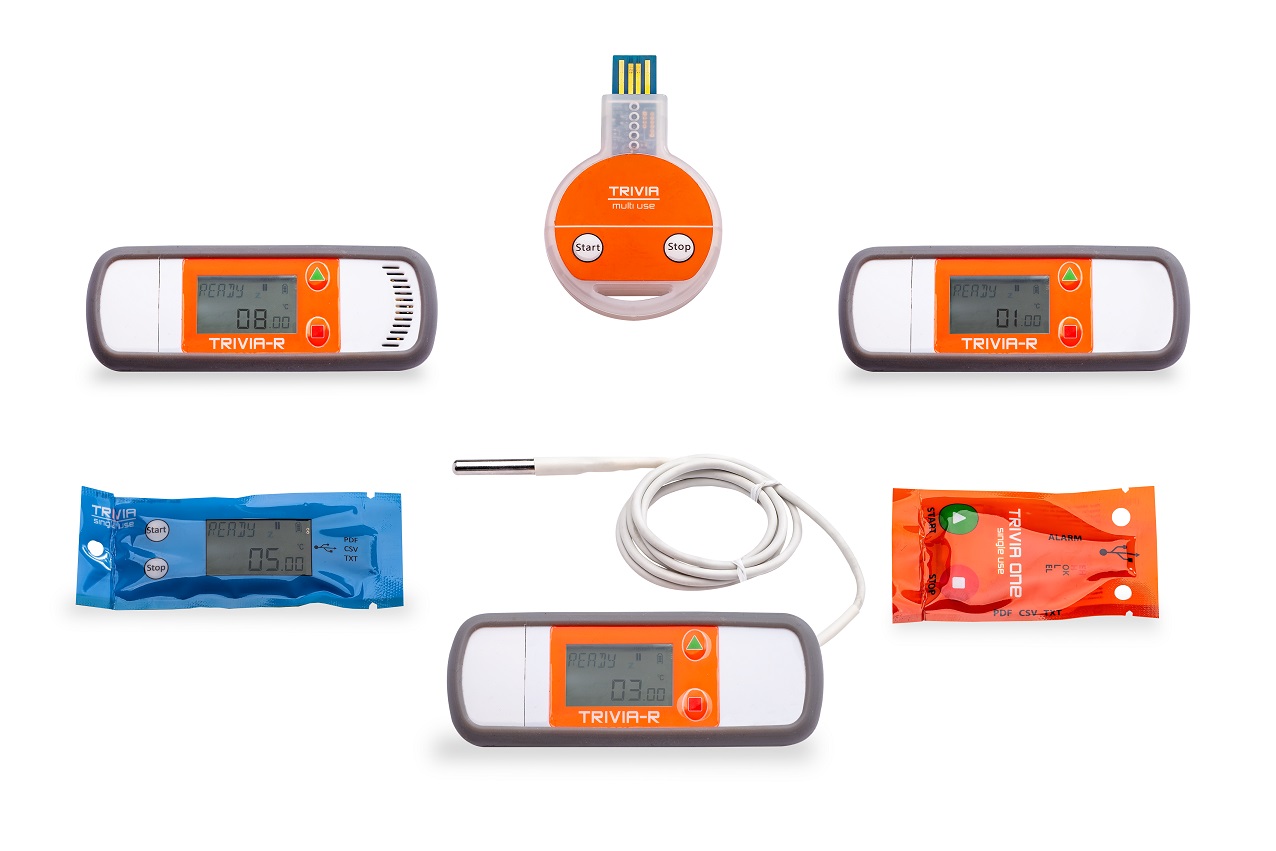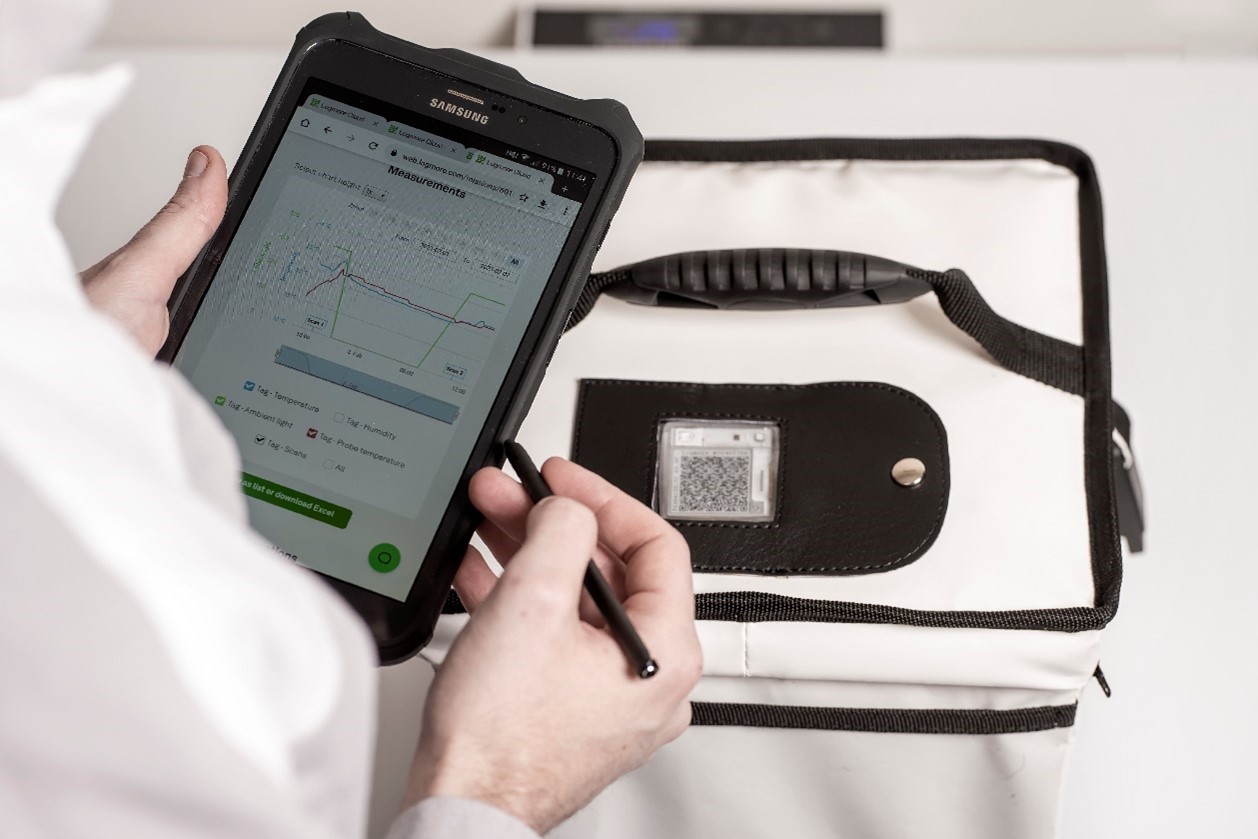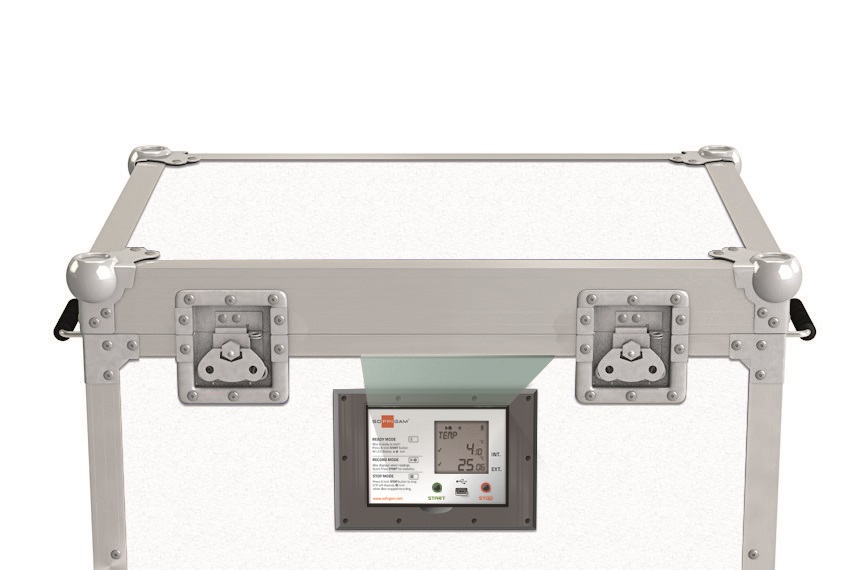Thematic studies
News
Case studies
Traceability: 3 key principles for efficient temperature measurement in packaging

You are well aware of the challenges involved in maintaining the cold chain and the official guidelines, but: do you know which product to choose to measure the temperature during the transport of your heat-sensitive products? Do you have a methodology for temperature traceability? Our project manager Alexandre Bertoux offers you our solutions and suggests some practical measures you can implement. Contents: How to choose a recorder? What constitutes good practice? Traceability challenges.
How to choose a temperature recorder?
We offer a range of 3 data loggers that can meet your different requirements and help you understand your supply chain.
Temperature recorders that indicate whether the cold chain has been maintained
The simplest and least expensive recorders are those that confirm that the temperature has been maintained throughout transportation by recording the data on arrival.
The Offline range offers USB recorders that can be programmed, slid into the products and then plugged into a PC on arrival to generate reports. This is the most intuitive recorder to use, whether it is an LED display or an LCD screen that displays more detail.

Scan online goes one step further because the temperature can be tracked at any time through a dynamic QR code visible on the outside of the package.
This QR code can be scanned with a mobile phone or another suitable device.
Encrypted data is centralised in the cloud and can be easily exploited.
This solution makes it possible to analyse the specific requirements for maintaining the cold chain at each stage of the journey and take corrective action on the logistics.

Real-time recorders help to close gaps in the logistics chain
The Real-Time connected recorder provides significant added value by sending information in real time: the temperature is taken at regular intervals allowing you to be proactive throughout the transportation process.
You can use geolocation to track your product and set alarms to alert you instantly to the slightest anomaly.
The data is fed back through the mobile network and centralised in a cloud.
Our active cold chain packaging (the iBox packaging and the Coldway Rolls and Containers) incorporate this solution.
This complete solution is preferable if:
- Your product has a high value,
- The risk of temperature fluctuations could have serious consequences,
- You want to have a real-time overview of the shipment.

We can advise you on the most suitable solution and qualify the temperature recorder in the package to give you maximum peace of mind in risk management.
Alexandre Bertoux
Your selection criteria: the financial and human costs incurred must be weighed in the balance
Ask yourself the right questions before choosing your data logger:
- What is the value of the product to be transported?
- What would be the risks and costs of a break in the cold chain?
- How complex are your supply chain logistics? Closed-loop, multi-transport, domestic transport, reverse logistics loop? Is it mass shipping, or a single high-risk product shipped to multiple sites: gene therapy, for example?
- Should the recorder be reusable or single-use?
- What information do you need in terms of product traceability (temperature, humidity, impacts, etc.)?
- Which alarms should be set up based on the duration of the transport (measurement frequencies, tolerances, etc.)?
- What resources (human and time) do you have available to export and analyse the data? The more automated the traceability solution, the more processing time you save.
- Does your company have specific safety rules (e.g. a USB ban)?
- Does the recorder have to comply with specific quality assurance certificates (RoHS, CE, DO-160, EN 12830, GAMP 5, 21 CFR PART 11, etc.)?
The challenge is to find the most suitable recorder for both your logistical requirements and your temperature-controlled packaging.
So, take advantage of Sofrigam and its 30 years of experience in cold chain logistics to customise a "packaging + recorder" solution that meets all your criteria.
What constitutes good practice in effective temperature measurement?
Once you have selected the packaging and recorder that are compatible with your product and its mode of transport, we recommend you follow these three basic rules for effective traceability management:
1. Place your probe(s) in the most appropriate place in the package
The probe(s) must be positioned correctly inside the packaging for the temperature measurement to be representative. Therefore, the probe should be placed at the most critical point revealed by the qualification of the packaging, taking care not to place it in contact with areas that may distort the temperature (near eutectic plates or evaporator outlet). In general, the middle of the packaging is the area where there is less temperature variation.
Depending on the type of recorder and your specifications, Sofrigam can predefine the locations of the probes that will be the most relevant, following qualification tests in a thermal test laboratory.
2. Stabilise your recorder with the product before starting it
The recorder must be stabilised with the product before it is started. In some cases, it can be programmed to start within a defined period after the shipment has left, allowing it to stabilise.
3. Implement tried and tested procedures
Choosing the right traceability system is not all you need for good risk management. Care should also be taken to ensure that staff are trained and that a clear and consistent procedure is followed throughout the transport process:
- Define data access rules.
- Set up alarms, consecutive alarms, measurement frequencies, etc.
- Determine responsibilities for stopping/starting the recorder or even blocking the stop/start.
- Record the times when picking up the recorders.
- Track tracking numbers and calibration dates. Monitor.
- Manage the software aspect with access control and security.
- And so on.
It should be noted that cold chain excursion problems are more often related to human error than to technical faults.
Alexandre Bertoux
Traceability challenges: reduce costs and ensure product integrity
Even if a cold chain packaging is qualified to maintain the required temperature throughout the journey, it can only be proved that the cold chain has not been broken by recording the temperatures.
No one is immune to unforeseen conditions in relation to the logistical profile for which the packaging has been qualified. The temperature recording is the only proof that the temperature is being maintained!
Alexandre Bertoux
A product that is not compliant due to a temperature excursion incurs costs for the company:
- loss of product,
- replacement costs,
- investment in time to understand and correct the error,
- etc.
The annual financial loss due to the degradation of drugs and medication (through temperature or logistical incidents) is estimated at $35 billion per year.
Beyond the financial aspect, obviously, consumers health is at stake, particularly in the case of the transport of food or pharmaceutical products.
Consider this:
- 50% of pharmaceutical products on the market are heat sensitive.
- 20% of pharmaceutical products are reportedly damaged during transport due to temperature fluctuations.
Temperature traceability is, therefore, an essential element of cold chain management to better manage risks during transport and ensure the safety of shipments.
How can you optimise your costs and logistics? By tracking the temperature of the products that need to be transported under controlled temperatures! Traceability allows you to rely on verified data and implement the necessary measures for successful shipments.